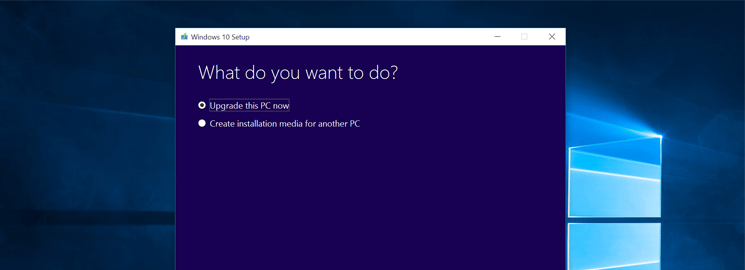Whether you like it or not, if you’re running an older version of Windows and you have a compatible computer, you might suddenly find Microsoft’s Windows 10 upgrade already downloaded on your machine. This automatic download is part of Microsoft’s aggressive push to get Windows 10 on as many devices as possible. Since last July, Microsoft has distributed this free upgrade only upon request, but recently it’s also pushing it out to those who haven’t requested it. This update is about 3 gigbytes per computer. Microsoft isn’t actually installing Windows 10 automatically, but installation is just a click or two away. If you’re not careful, you might suddenly find the new system on your old machine. With that in mind, most people who select all the default options when upgrading and are not too concerned about Microsoft collecting a variety of data from you it is a safe update.
One of the first questions I’m often asked when it comes to upgrading a system is how easily can you go back to your old one if you don’t like it. The answer with Windows 10 is that it’s very easy. Microsoft has built in a simple process that only requires a few clicks to have the system roll back to your previous version of Windows. And so if Windows 10 is just not for you then going into SETTINGS–UPDATE & SECURITY–RECOVERY and selecting ‘Go Back To‘ Windows 8 or 7 or XP.
With that in mind, there have been complaints that compared to Windows 7, Microsoft is collecting a lot more personal data about you in Windows 10. This is true and mainly a direct result of Cortana, which is a voice activated personal assistant based partly on artificial intelligence technology. Much like Google Now on mobile Android devices or Siri on mobile Apple devices, you can use voice commands or type your commands in the Start Menu for Cortana to create appointments, set reminders, alarms, or search items online making life a little easier and more productive. Cortana requires the same sort of trade off – some privacy risk in exchange for useful functionality but Cortana is not on by default, and can’t be turned on by accident.
System upgrades aren’t always smooth, especially on older machines with slower processors, less memory and less storage space available. Microsoft’s Get Windows 10 app will verify that you meet minimum system requirements. Older machines also might have software that won’t work on Windows 10, so you’d have to spend money upgrading those programs, if upgrades are available at all. Printers, scanners and other accessories also might need new controlling software, called drivers. If a driver update isn’t available, you might find yourself with a dead accessory.
While Windows 8 was an unpleasant surprise for a lot of people, Windows 10 goes a long way to putting that right. The OS is clean, familiar, like it was on Windows 7 and its predecessors, where it’s easy to understand, plus it has a wealth of new, helpful features that you’ll actually want to use. The fact that it’s free for the majority of existing Windows users, and can be rolled back quickly to the previous version if you don’t like it, really makes it very, very easy to recommend. And so if you go to www.microsoft.com/windows you can find out more information.

